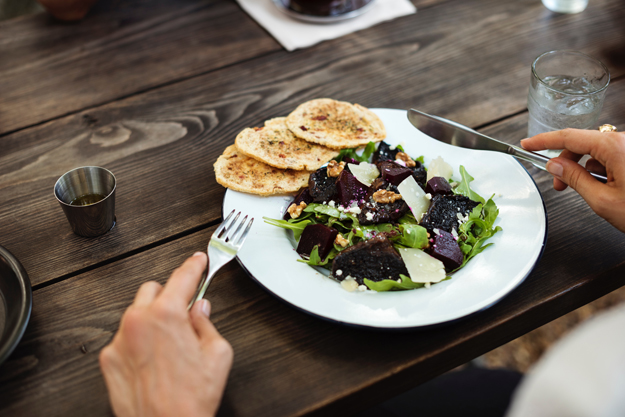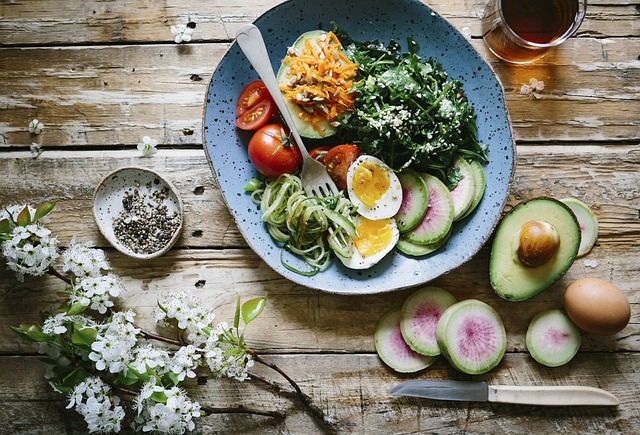
How to eat right and lose weight
Lose weight!
No magic additives. No dope. No alternative shake or miracle workout
In this article, we will briefly and in the simplest and least technical way explain how we can eat “a lot” of food and feel satiated and full more easily while keeping calories low.
It is possible: it is only reasonable to choose the foods we are going to consume and use the concept of calorie density, that is, the ratio between the amount of food and the number of calories entered.
To begin with, everyone should know that:
- 1 g of carbohydrates gives 4 kcal
- 1 g of protein provides 4 kcal
- 1 g of fat provides 9 kcal
Fiber does not provide calories, because humans (unlike, for example, herbivores) are not able to digest them and use their energy. Therefore, they are optimal for filling the stomach and increasing satiety without providing any additional calories.
Fiber is found in most plant foods, mainly vegetables (such as lettuce, broccoli, Swiss chard, etc.), and various “whole” foods (so 100g of pasta and White bread contains slightly more carbohydrates than whole grain breads and pasta, fruits and vegetables.
Protein is also very satiating, and a combination of lean meats and vegetables is always a great way to keep calories low and make meals that are filling and satisfying.
CASE # 1
Let’s look at an example of an average subject and how he can consume the same amount of calories while consuming completely different amounts of food (at the level of volume and therefore satiety) depending on how they choose their food.
Male, 25 years old, 175 cm, 80 kg, 20% fat. Work out 3 times a week in the gym with a classic routine.
The classic average subject with relatively little muscle mass, abundant fat mass, although not too large, with thighs and a round belly (but not too large), who wants to lose weight and then lose that 6-7 points% body fat. arrive with some dignity for a “date with the beach.”
Your calorie goal for good weight loss, so at medium speed and not too demanding, can easily have a 15% calorie deficit compared to the total calories consumed in all your daily activities (including training).
I have not considered strategies such as periodizing calories or carbohydrates based on ease of exercise.
If the subject followed these values to the letter, assuming the calculated numbers (which are always theoretical and never ideal), they would lose about 330 grams per week, that is, 1.2 kg. month. This, with a fixed deficit of 15%, is a very slow and conservative approach. The deficit can be completely larger in order to achieve faster weight loss, but it should be borne in mind that the larger the deficiency, the more stress there will be in the body, and, therefore, for a shorter time this hypocaloric regime can be maintained and more muscle mass will be lost; and aesthetically, we get a lousy result: the aesthetic impact depends not only on the mass of fat, but rather on the ratio of mass of fat to muscle mass.
These calories can be consumed when eating foods with a high caloric density: therefore, when eating very little and suffering from hunger, which will make it difficult to consistently adhere to the diet (evidence that absolutely reflects BASIC performance, more than that -or else) Pay attention to https://steroidsshop-ua.com/product/203/
SOME TYPICAL EXAMPLES might be:

HIGH DENSITY FOOD CHOICE: breakfast with milk, honey and toast; pasta and beans and meat for eating; banana as a snack; and chicken salad, with a little butter and a little cheese, for dinner
CHOOSING LOW DENSITY FOOD: we could get the same calories and macros using low calorie density foods: eating hearty meals and much more rewarding.
Here we see lunch and dinner at the volume level: 60 g of basmati rice, 200 g of tomatoes and 100 g of tuna, which fills a large salad bowl; and for dinner 300 g of chicken with salad, a little butter and a little bread, which is not a small dish.
However, we will have a nicer breakfast with Greek yogurt, honey with toast and a handful of hazelnuts, and above all a turkey and cheese sandwich, which is quite a bit.
(Calorie and macro values are approximate.)
In this case, dieting will certainly be much easier and less stressful.
But do not think that by following a long-term calorie deficit, you can completely avoid hunger: there will always be a certain feeling of hunger, and the more you lose weight, the more it will increase
SOME SIMPLE HUNGER MANAGEMENT TIPS
Meals you can prepare at home, make large salads, lean meats, and minimize your carbohydrate intake (i.e. sandwiches, pasta, fruits, and the like). Thus, you can consume these carbohydrate-rich foods for lunch or snacks such as fruits, sandwiches, cookies, turkey cheese toast and the like.
At the end of the day, you’ll probably be much happier. If you burn most of your carbs with a good plate of pasta or rice, for example, at lunch or snack time, you will have more difficulty because you only have to eat “seconds” and it will give you the feeling of eating less.
These tips obviously vary greatly depending on personal taste. As we have explained in other articles, total calorie intake and macro distribution are fundamental to the end result: the more beginners you are when it comes to body composition, that is, the further you are from the values of muscle and fat mass, to which (according to your potential) you strive, the more important these factors are and the more important others, such as the number of meals, supplements, types of food, etc., are not important.
There is one important thing that is often overlooked: DO NOT DRINK your calories and especially carbohydrates. By drinking, for example, a lot of milk or fruit juices (even 100%), you introduce liquid carbohydrates, which, as such, will saturate you very little, and then you will have to refuse to consume them firmly with meals, where they can really be full.

A final tip is to break down macronutrients (protein, fat, carbohydrates) based on the type and amount of exercise you do, and based on your muscle mass.
Large muscle mass requires more protein: the greater your total training volume and therefore the resulting muscle damage, the greater your protein intake. The indicative range for the hypocaloric phase and therefore weight loss could be 1.8 to 2.5 g / body weight.
The higher the frequency (training days) and the intensity of physical activity, the greater the need for carbohydrates.
Fat is better not to throw it at 0.4 g x kg of body weight, because it is necessary for the production of hormones and for the functioning of cell membranes.
